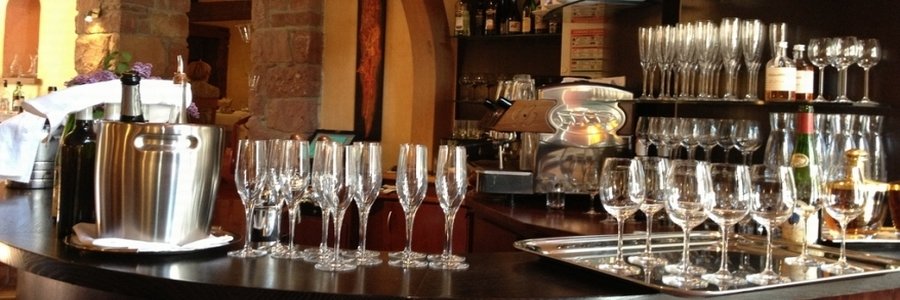The Alsace Grand Cru tours (in het Nederlands vindt u deze tekst hier)
The history of wine making in Alsace goes back to old Roman times. Castles dot the landscape, villages, churches, vineyards and wines, cuisine and traditions all make Alsace a unique and magical European experience.
Did you know that apart from Japan, the french Alsace region has the most Michelin * restaurants in the world? Did you know that there are recognized over 800 soil types in Alsace? Given the fact that most winemakers in Alsace make their wines in the wine field and not in the wine cellar that results in an enormous variety in smells and flavors. It also means that the wine year really make a difference.
Did you know that the great white grand cru wines often have an enormous aging potential?
On this tour you will find it all out ! We offer you the biggest names and visit wineries like Zind Humbrecht, Deiss,Trimbach, Hugel, etc.
You will visit the Confrerie St Etienne at the Chateau de Kientzheim with its history and with a wine cellar with over 65.000 bottles going back to the 1800's.
We have our lunches and dinners in the finest restaurants often Michelin starred.
The Alsace Grand Cru tour is your chance to visit and taste the very best Alsace has to offer.
What you will do and see
We will start with an introduction and overview. You will learn about the grand cru system. Understand what happens and what it means when winemakers are not allowed to irrigate their fields.
You will taste from dry to sweet; compare young and old.
Each day you will be in a different area. We will be in "bas rhin" in the north and "haut rhin" in the south, but because of the changing shape and presence of the Vosges mountains, there are a lot of different micro-climates within those areas. The micro climates all leave their trace and signature in the wines.
Our lunches and dinners
As stated we have selected some great restaurants. Apart from their rating in the Michelin guide they are also chosen for their location. On your tour we do not want to waste time on unnecessary driving. Wines during lunches and dinners are for your own expense, except for the last evening dinner where everything is included.
Who will be on the tour?
You will meet wine lovers that "know their wines" and also have been in other wine areas. But you will also meet "beginners" and people that want to get to know Alsace and its culinary highlights. Considering age: there will be younger and older people from diferent backgrounds.
In other words the groups are mixed, but the thing everybody has in common is wanting to "wine and dine" on a high level, get to know the area and meet other people that also want to share that same experience.
Stay in a selection of fine hotels
Depending on the tour we sometimes choose one hotel for all our tour guests. On other tours we use three of the best hotels in Colmar that are on walking distcance from each other. That means that you book the room(s) you want yourself.
The tour bus will always pick you up and drop you off at your place. On some evenings we can walk to the restaurant and back to the hotel.
Costs
The tour rate per person is: Euro 995,=
Once your Alsace Grand Cru Wine Tour begins you can relax knowing that the tour rate covers absolutely everything besides your hotel and breakfast expenses.
So: guides, all lunches and dinners, all tasting wines, excursions, all entrance fees, tasting fees, tips, taxes and gratuities are dealt with. Tipping is neither required nor expected.
Last but not least: you are not obliged to buy any wines on the tour but "if" you do, we can assist you in shipping those wines.
Résumée - Alsace Grand Cru tour from Colmar
- 4 nights, 3 tour days
- Exclusive touring: minimum of 4 couples or 8 people, maximum 8 couples or 16 people
- Air conditioned mini-bus with driver
- 7 tastings, more than 60 wines, compare many grand cru's
- 3 lunches, 3 gourmet dinners (one with Michelin *)
- Stay in one of three of our preselected hotels in Colmar
- Tour rate per person: Euro 995,,=,
- including all tour transport, all tastings, 3 lunches, 3 dinners
- excl. hotel and breakfasts
- We can assist you in shipping your wines
- Your tour host : drs. J. Pieter Smits
Please check our Event planning for available tour dates in 2021 and 2022.
For Alsace book here!







































